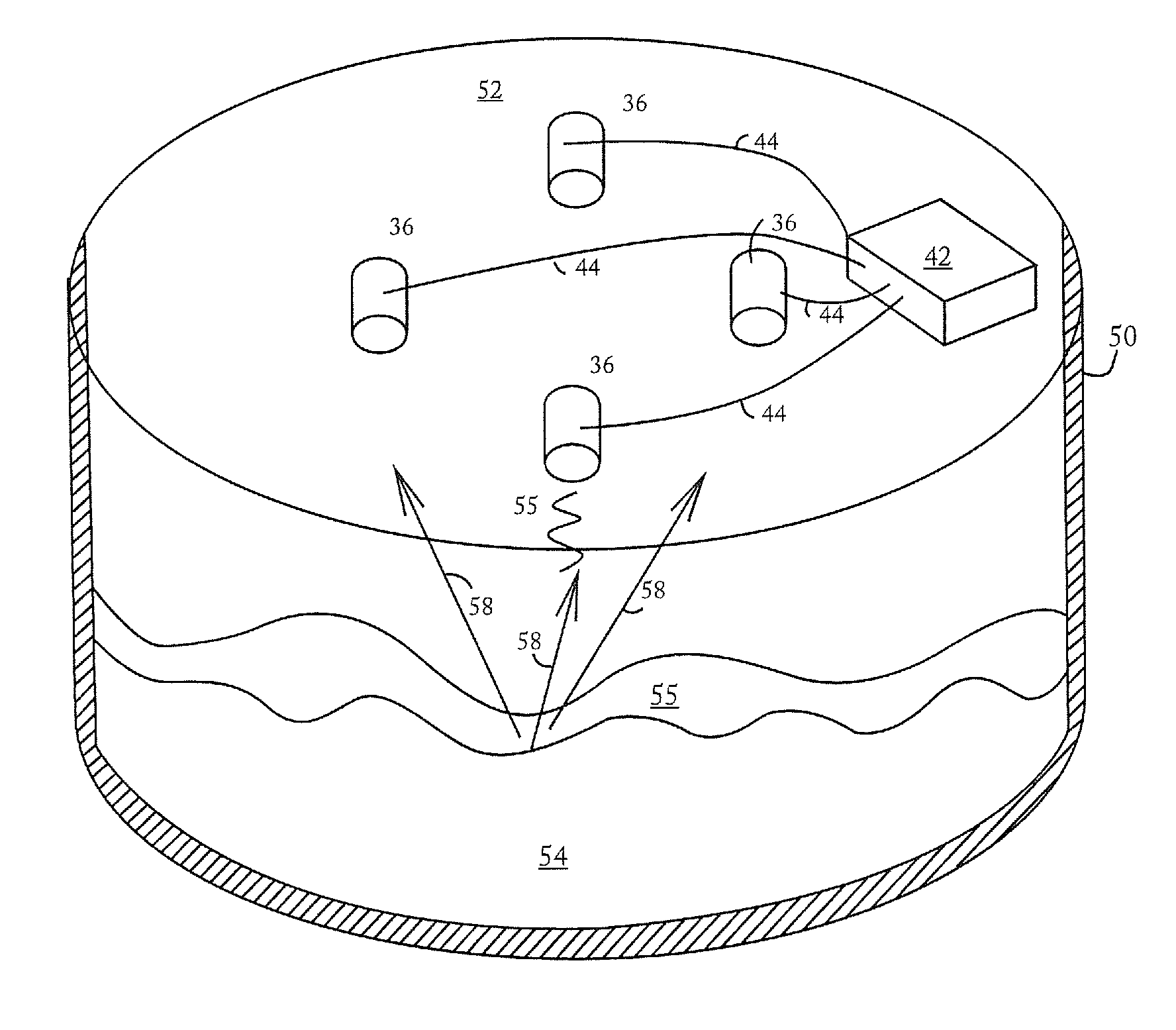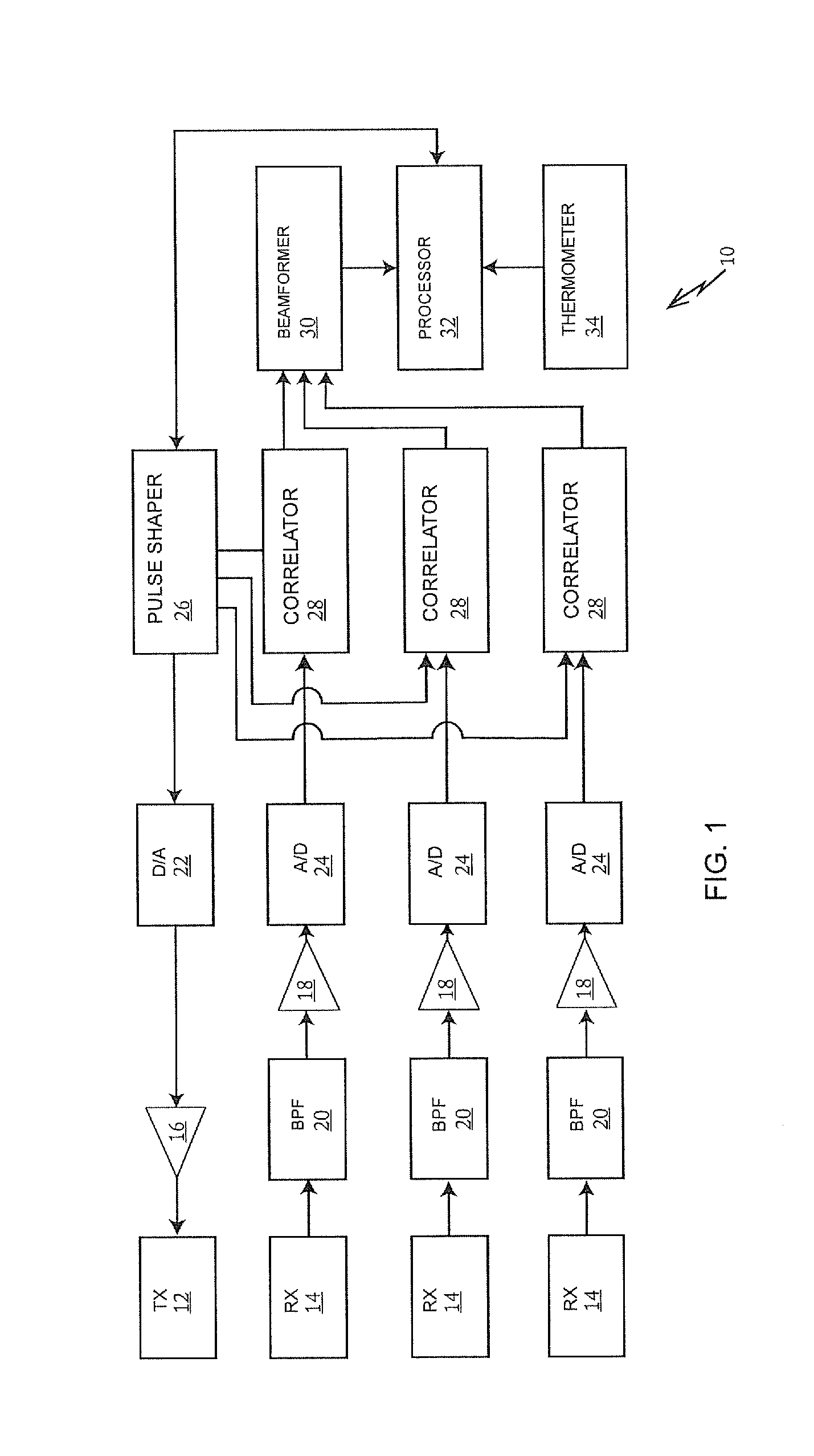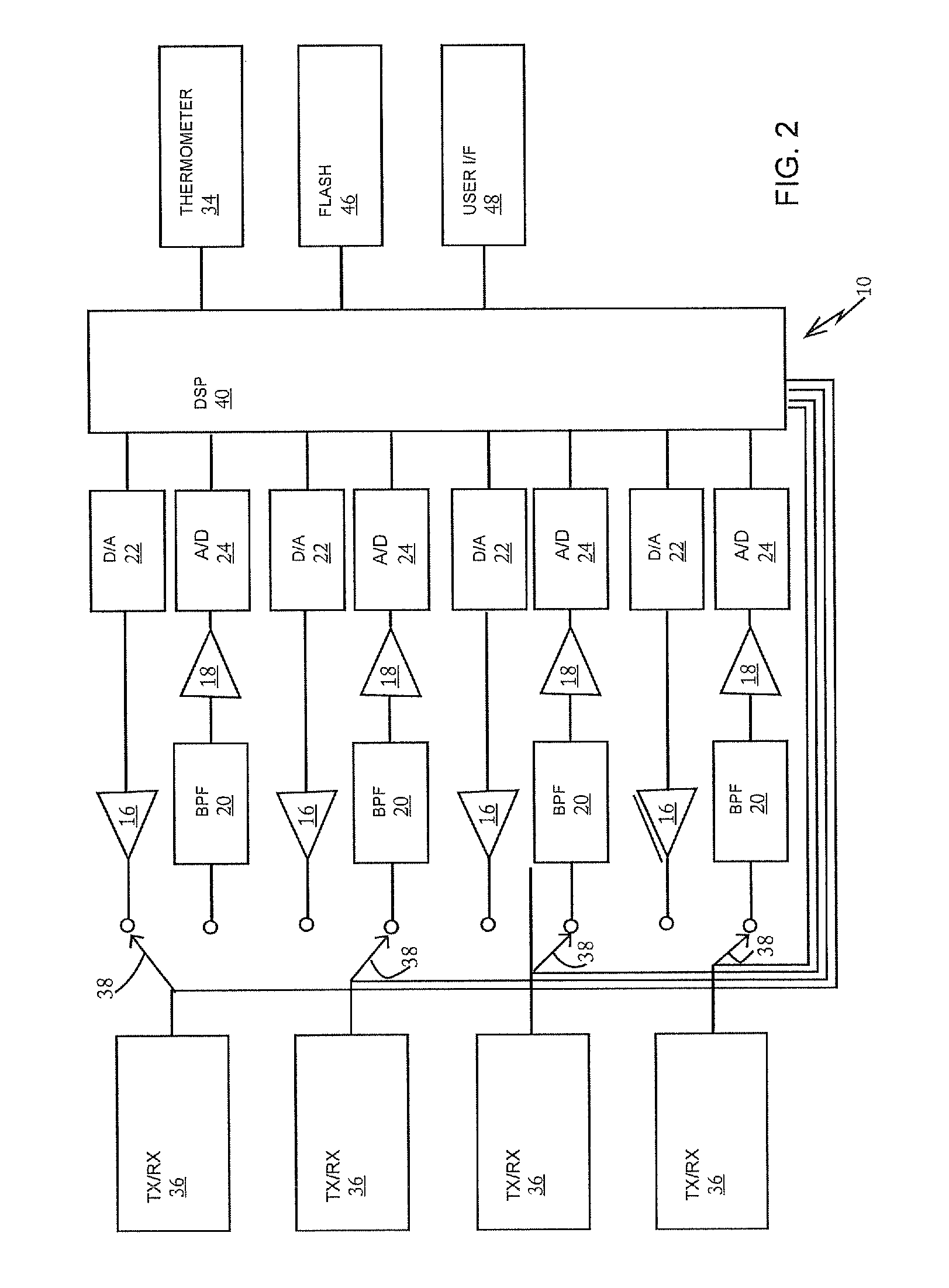Surface mapping by virtual array processing via separate transmissions
a virtual array and processing technology, applied in the field of measuring the content of bins, can solve the problems of unresolved problems such as the difficulty of monitoring and the difficulty of storing bulk materials inside bins such as silos, and achieve the effect of improving the level of bulk materials inside bins and improving the quality of materials
- Summary
- Abstract
- Description
- Claims
- Application Information
AI Technical Summary
Benefits of technology
Problems solved by technology
Method used
Image
Examples
Embodiment Construction
[0042]The present invention is of a system for measuring the quantity of material stored in a bin such as a silo. Specifically, the present invention can be used to monitor inventory in a silo.
[0043]The principles and operation of content measuring according to the present invention may be better understood with reference to the drawings and the accompanying description.
[0044]Referring now to the drawings, FIG. 1 is a high-level schematic functional block diagram of a system 10 of the present invention. The arrows in FIG. 1 indicate the direction of signal flow. System 10 includes an acoustic transmitter (speaker) 12 and three acoustic receivers (microphones) 14. A pulse shaper 26 synthesizes digital pulse forms as described below. The digital pulse forms are converted to analog electrical pulses by a D / A converter 22 and amplified by an amplifier 16. The amplified analog electrical pulses are converted to audio pulses by transmitter 12. Echoes of these audio pulses are received and...
PUM
 Login to View More
Login to View More Abstract
Description
Claims
Application Information
 Login to View More
Login to View More - R&D
- Intellectual Property
- Life Sciences
- Materials
- Tech Scout
- Unparalleled Data Quality
- Higher Quality Content
- 60% Fewer Hallucinations
Browse by: Latest US Patents, China's latest patents, Technical Efficacy Thesaurus, Application Domain, Technology Topic, Popular Technical Reports.
© 2025 PatSnap. All rights reserved.Legal|Privacy policy|Modern Slavery Act Transparency Statement|Sitemap|About US| Contact US: help@patsnap.com



